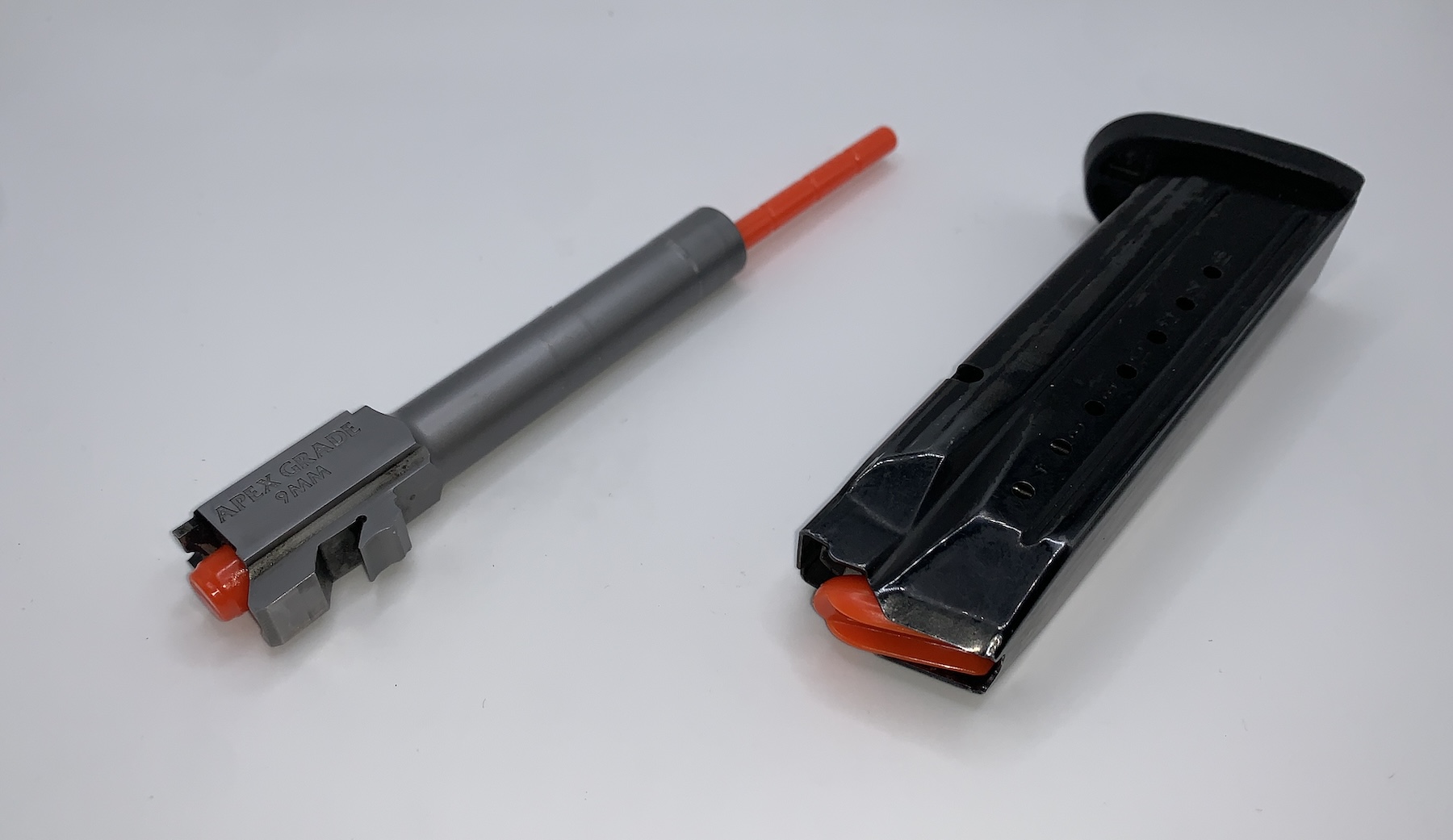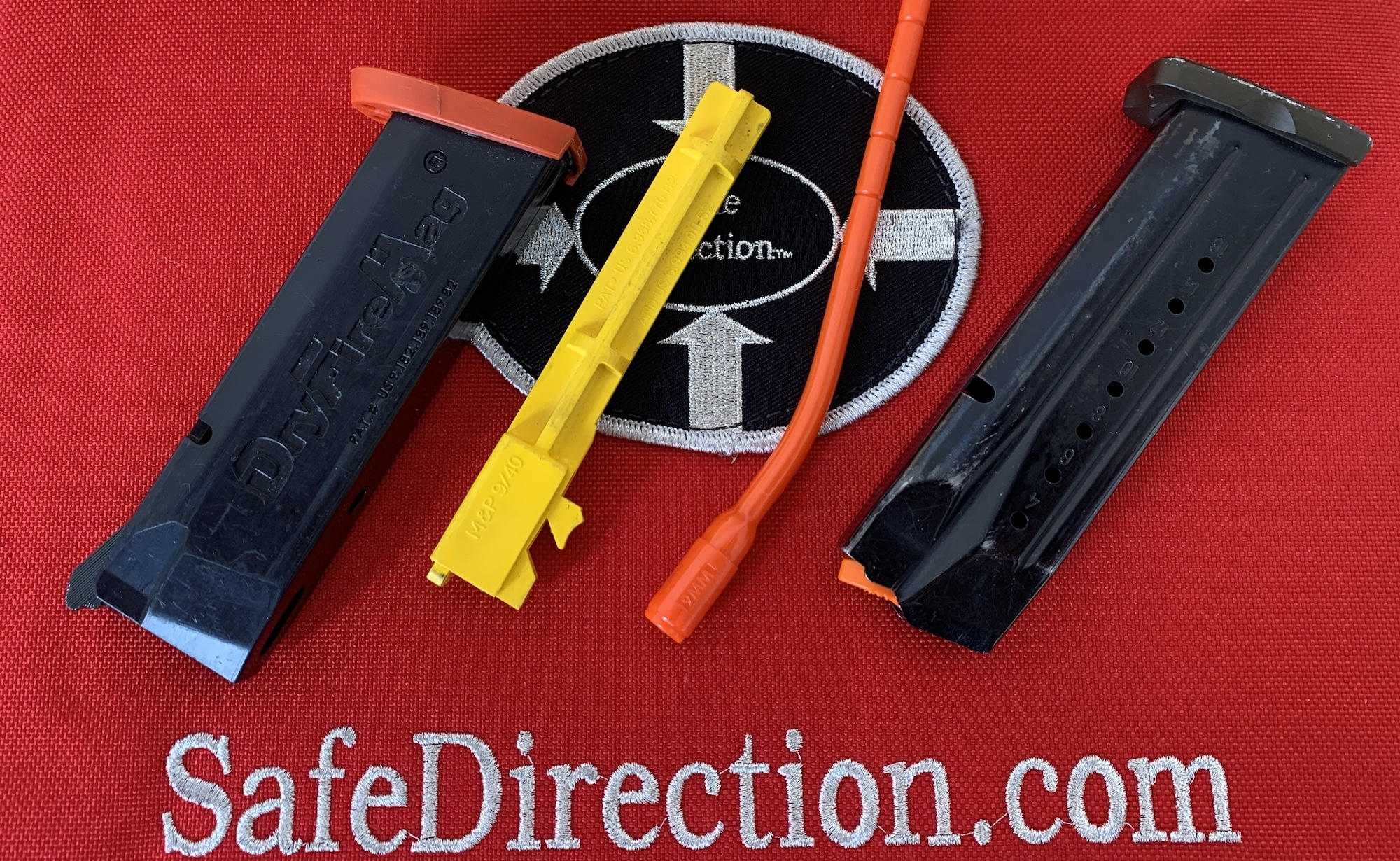
feature_7270
It’s good to see that there is a solid consensus on the importance of dry practice. Trainers of all backgrounds are recommending it to their students. There is a lot of discussion about what to practice sans gunfire and how to practice.
What does not get touched on is the lead-up to it. In other words, how to do it safely.
Wording—I’m not normally a fan of changes to long-standing terms. However, the switch from Dry Fire to Dry Practice makes sense. Dry practice isn’t just aligning the sights and pressing the trigger. It can be done across the whole spectrum, and pressing the trigger is only a small part.
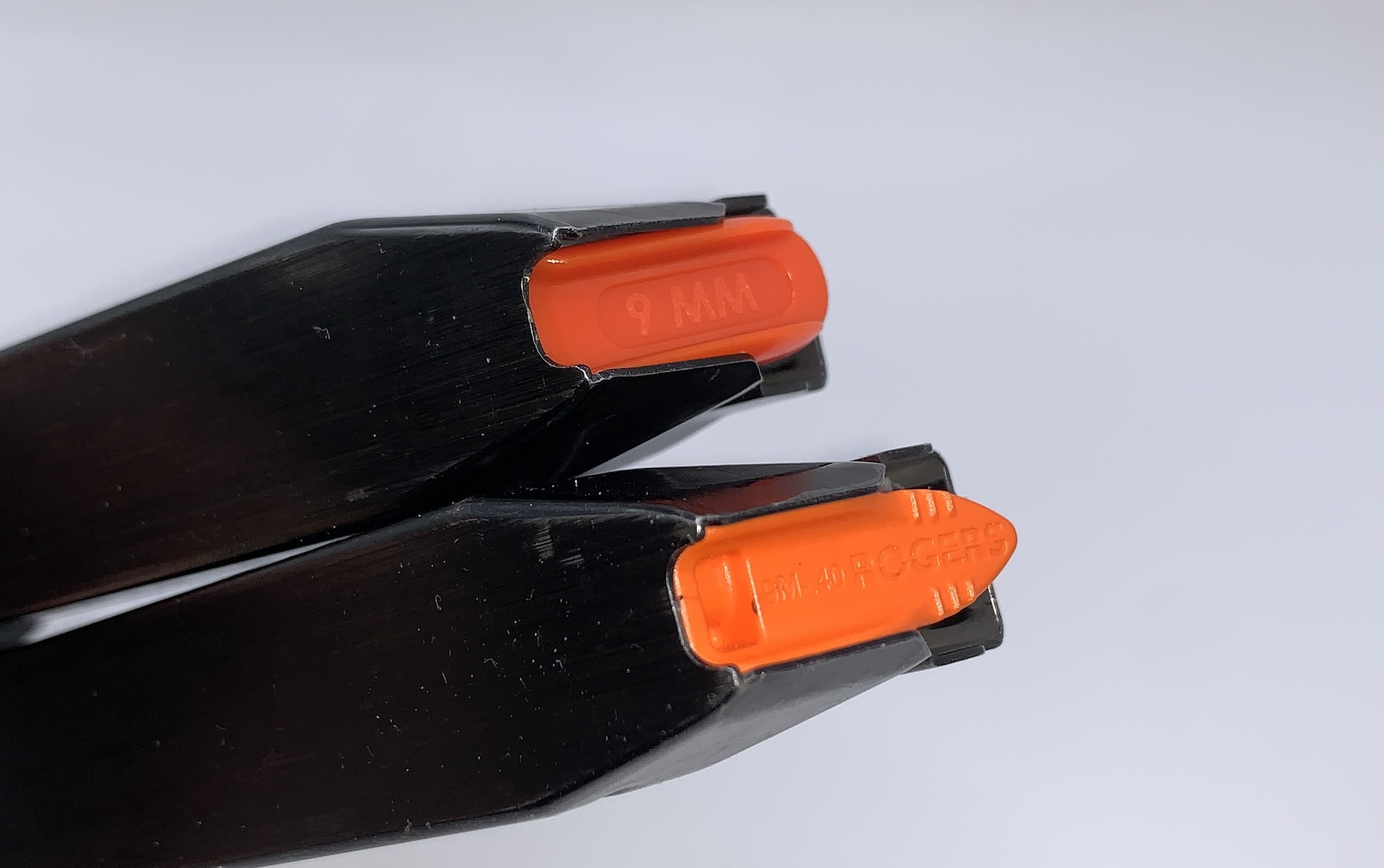
Both Rogers and BarrelBlok have developed these high-visibility inserts for handgun magazines. They indicate visually that the magazine should be empty (still check) and prevent the follower from engaging the slide stop.
Prior to my first Gunsite class in 1994, I had heard about “dry fire,” but I had never really been talked through the process. The extent was to unload the gun, acquire a sight picture, and pull the trigger without disturbing your sights.
A Vetted Process
Gunsite’s student handbook includes a vetted procedure. Like anything, it will not work if the practitioner does not follow it.
First, identify a place that is safe for you to dry practice in. An area or room that minimizes or eliminates distractions while having the ability to contain a round from the firearm you are using should you screw up. No live ammunition should be in that space.
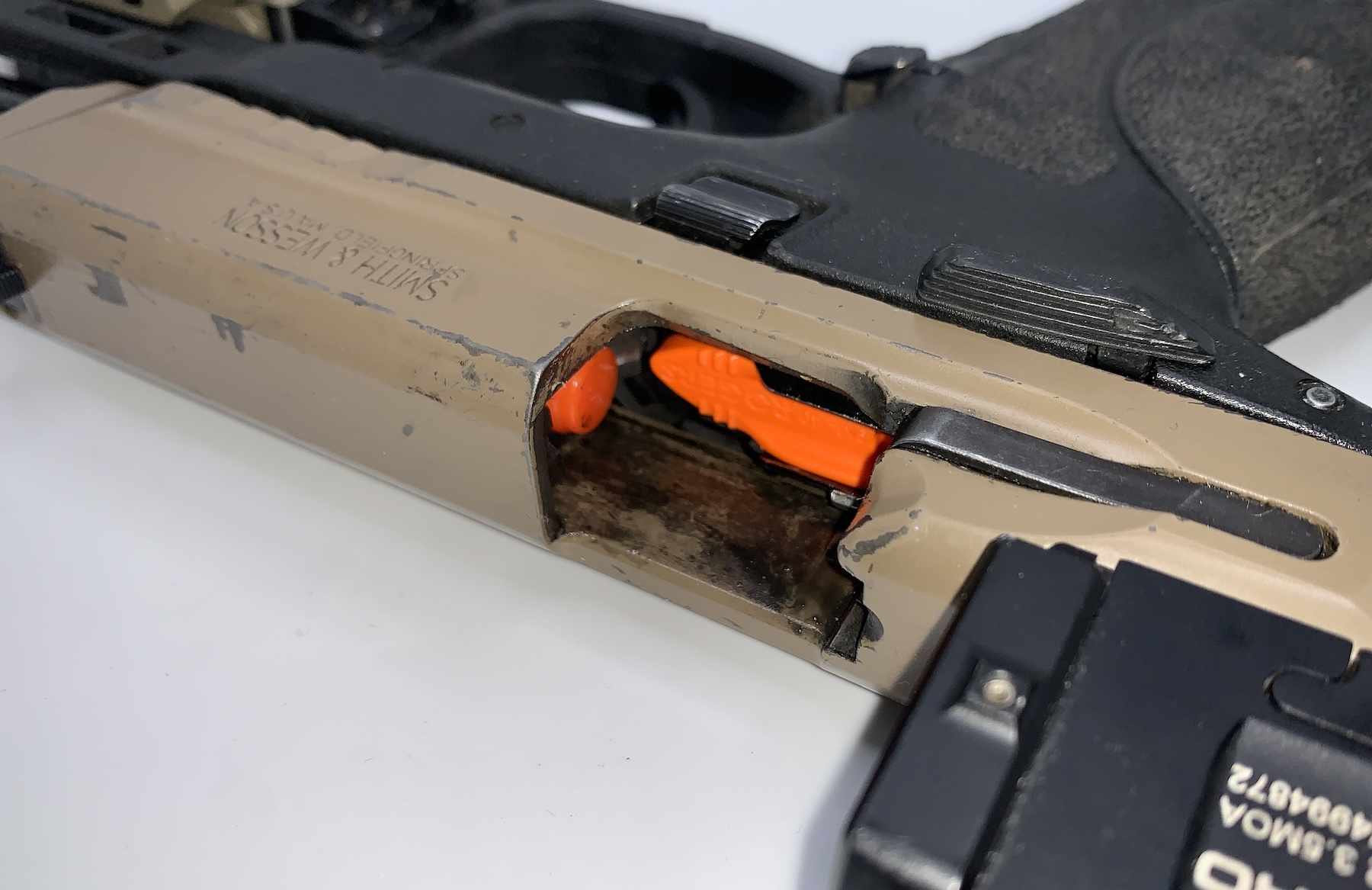
TheBarrelBlok definitely has merit. Here, the chamber and barrel are blocked while the insert is in the magazine.
Before entering that area, remove all the live ammunition from your person and the firearm. Place it in a container that is only used for that purpose. Magazines, rounds, speed strips, etc. – all of it goes in there.
Go in with a plan, like you would with any other endeavor. That includes how long you are going to practice.
Once inside, work that plan within the time frame you established. Then, when you are done – you are done. Leave the room. Reload your firearm if you are practicing with your carry gun. But you are done, so no “One More.” That’s it, finished.
What if you were interrupted? You stop. Either you start the whole process over, or you consider the work you had already done good enough for that day.
Draw, Sights
You can begin by working on your draw. That is comprised of accessing your firearm, defeating a concealment garment – if worn, acquiring your grip, clearing the holster, and working to a firing position.
A blue gun with the sights your sights on it can work in this role. I have a Ring’s Blue Gun with an enclosed emitter optic because of the red dot work I do.
Movement, Position
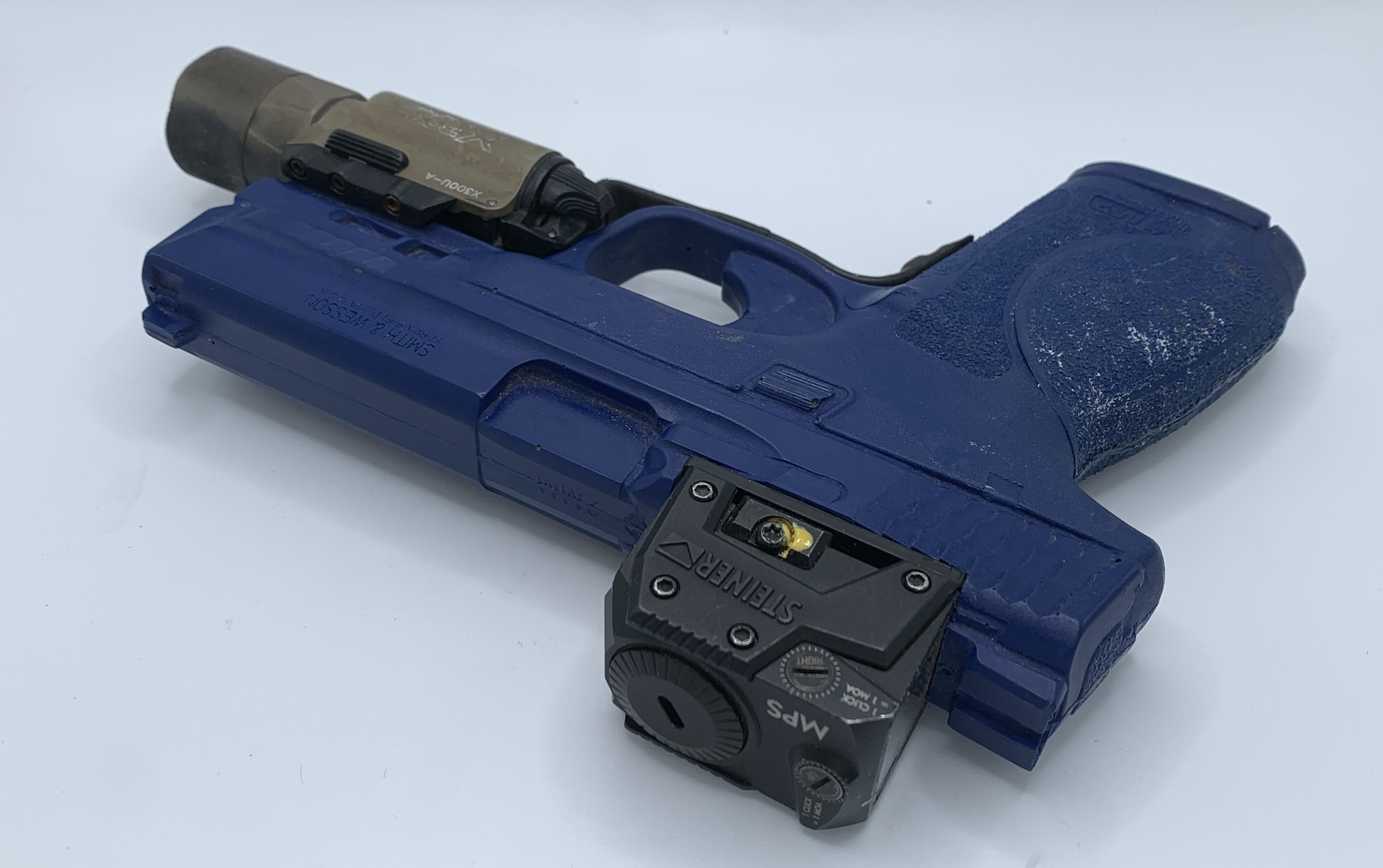
Ring’s Blue Guns and similar products let you practice drawing, acquiring your sights, and working with the gun – without concerns about firing it.
I can also work on moving and acquiring various positions. It also allows me to work on moving through and clearing my own abode. A Blue Gun lends itself to this, especially if you do not have a good backstop in the structure.
Working The Trigger
Stopping after each press to reset the firing mechanism by cycling the slide can be annoying. And it decreases the number of reps you can get in. Is there a fix?

DryFireMag’s offering for the M&P, there is a Glock version as well. There is no way to load ammunition into it.
Oh yes, the people at DryFire Mag came up with a solid fix.
From the outside, their product looks like any other magazine – except for the bright orange floor plate. It has a spring-loaded lever where the follower would normally be. After clearing the pistol and letting the slide go forward, insert and seat the Dry Fire Mag. The striker’s ledge contacts the magazine’s lever. The lever provides resistance when you press the trigger. Also, it minimizes the likelihood of pressing all the way through and releasing the striker. You get everything you need in the draw-to-shot process without having to cycle the slide manually.
Not Chambering A Round
BarrelBlok is a solution for the concern about inadvertently chambering a round. It addresses this in two ways. First, a brightly colored insert for the magazine identifies as being for dry practice.
Second, there is the barrel block itself. For semi-auto pistols, the block is inserted from the chamber end. The cartridge-shaped back end fills the chamber while the shaft extends past the muzzle. The combination greatly mitigates the likelihood of unintentionally chambering a live round.
Catching A Mistake
Ideally, there is never a failure in the process, but we are talking about humans. Wherever you dry practice, the area must be capable of containing the round chambered in your firearm. If it is not structurally capable of doing so, you need to provide that capability. Many of my peers have used the ballistic panels from older soft body armor.
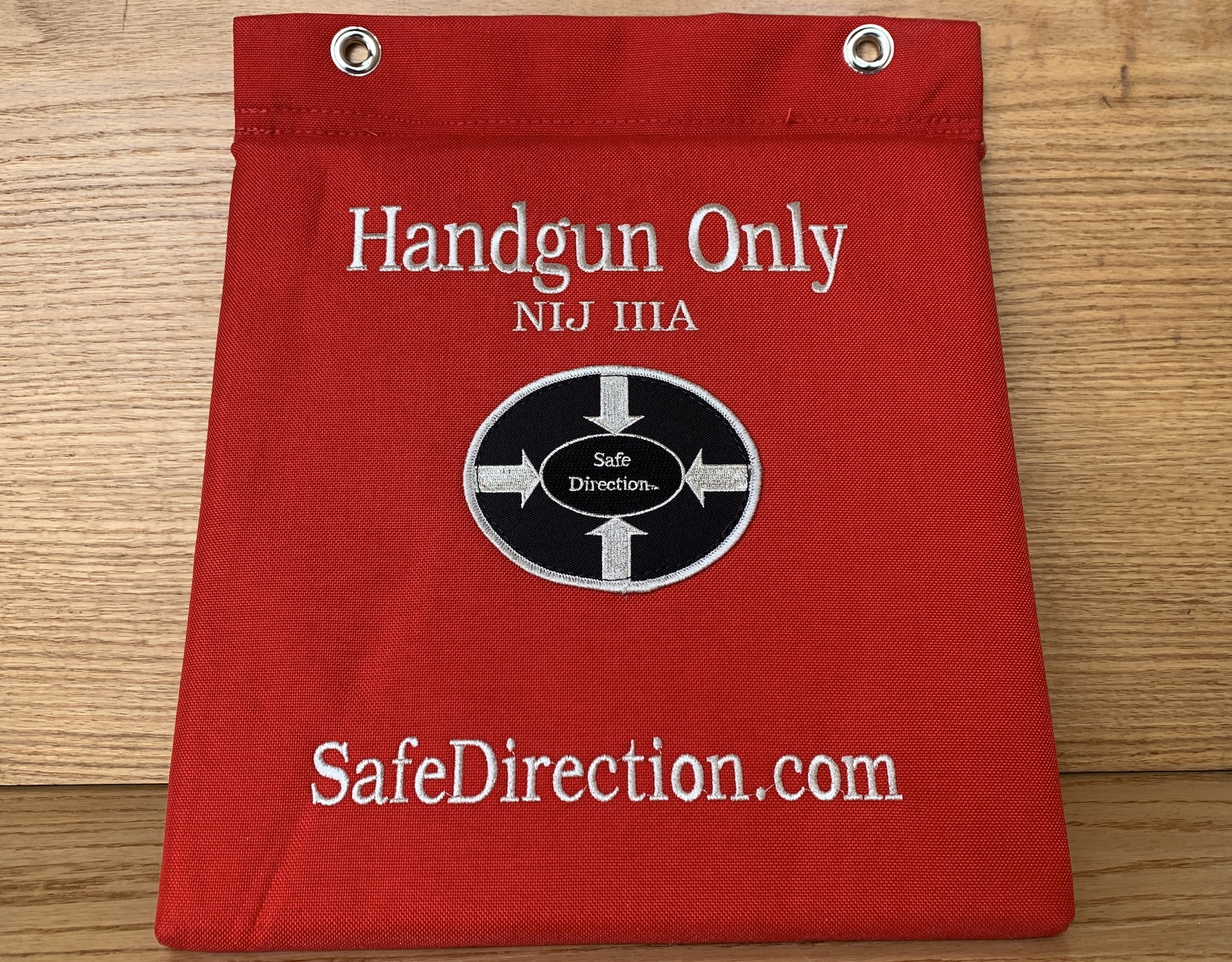
This is one of several products from Safe Direction LLC that allows you to dry practice with a product capable of stopping any screw-up with a handgun round.
If that is not available to you, strongly consider the Safe Direction IIIA pads.
Their panels are designed to be secured in a fixed position and used when loading or unloading the firearm. The target-like logo in the center can be used as an aiming point when dry practicing. Unfortunately, the design does not lend itself to multiple target and transition work.
What Do You Practice?
I have seen a very broad spectrum of recommended frequencies and times for one’s practice. The best guideline I’ve seen comes from a cop in the SF Bay Area: Practice a little, a lot. It is more beneficial to do a few minutes several times a week instead of 45 minutes once or twice.
While he no longer posts them, an Arizona police officer used to publish daily dry practice drills that took only 5 minutes to complete. Unfortunately, they are no longer on his Instagram feed.
Other Options
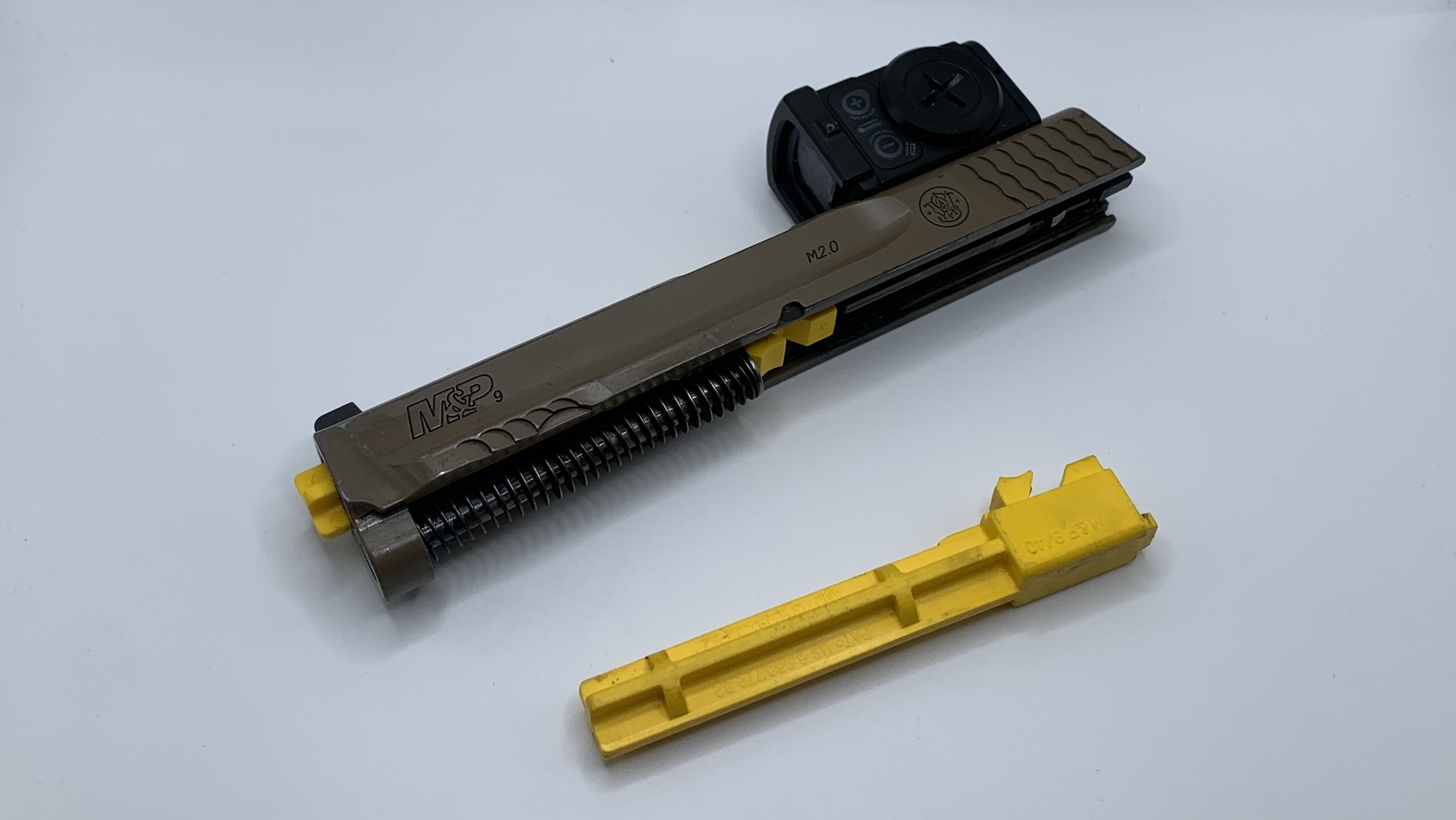
Unfortunately, Blade-Tech no longer makes these barrel replacements that allow dry practice with no chance of even chambering a round.
– At one time, Blade-Tech made drop-in barrel replacements that prevented the user from even chambering a round;
– We have covered Mantis-X previously and will revisit it in a few months to look at the upgrades.
And, if you live with others, consider letting them know what you are doing.
FINAL THOUGHT
Regardless of how you dry practice and what you use to do it, just do it.

